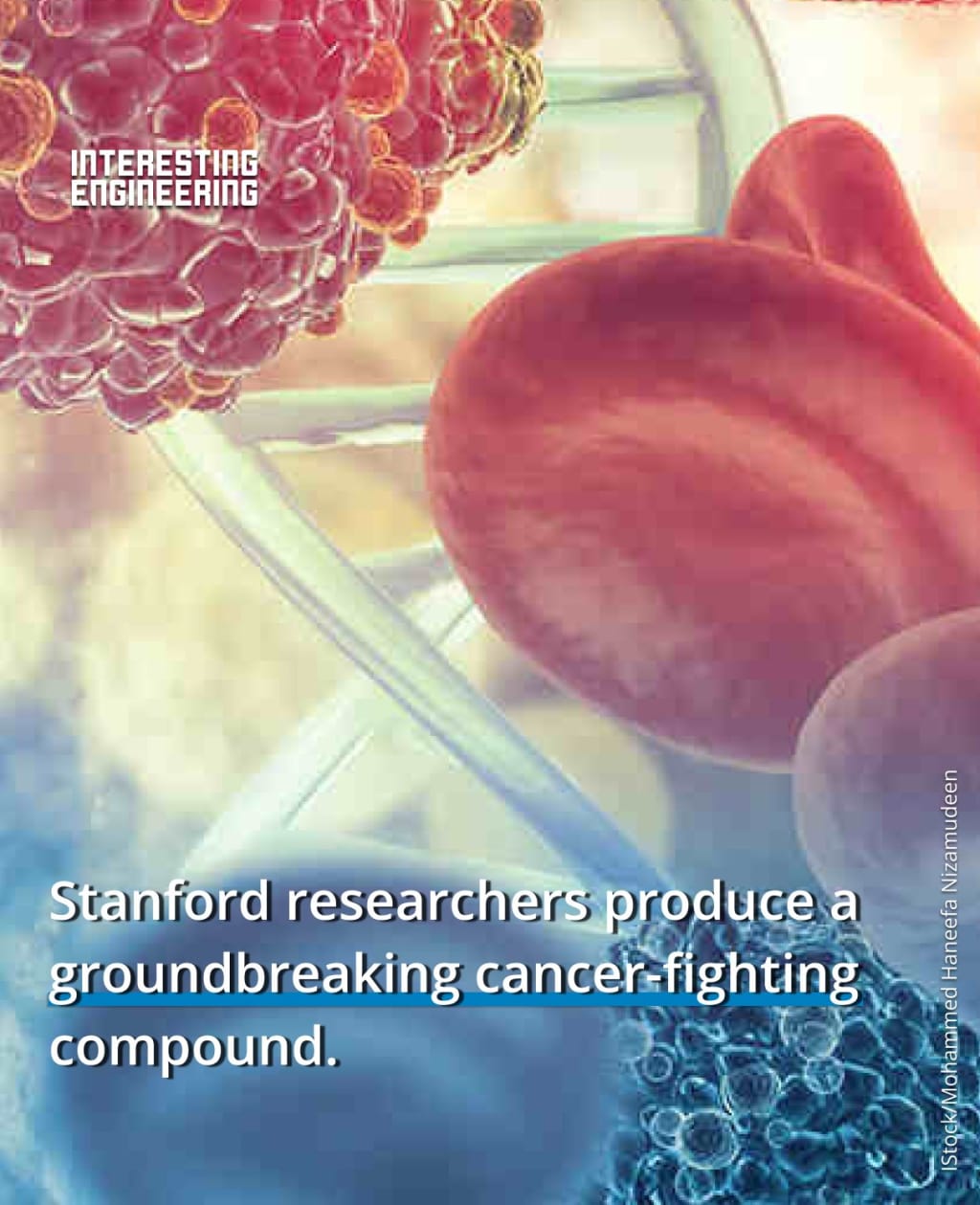
In what can be called a major scientific breakthrough, Stanford researchers have discovered a "rapid and sustainable" way to synthetically produce a promising cancer-fighting compound, designated EBC-46, right in the lab, according to a press release published by the institution.
This was "something many people had considered impossible," as the compound's only currently known source is a single plant species that grows solely in a small rainforest region of Northeastern Australia.
EBC-46 had recently entered into human clinical trials after its extremely high success rate in treating a kind of cancer in dogs.
Technically called tigilanol tiglate, the compound works by promoting a localized immune response against tumors. This response breaks apart the tumor’s blood vessels and kills its cancerous cells.
Now, given its incredibly complicated structure, EBC-46 was synthetically inaccessible - the path to produce it in a laboratory was nonexistent. However, Stanford researchers brilliantly demonstrated, for the very first time, how to chemically transform an abundant, plant-based starting material into EBC-46.
"We are very excited to report the first scalable synthesis of EBC-46," Paul Wender, the Francis W. Bergstrom Professor in the School of Humanities and Sciences, professor of chemistry and, by courtesy, of chemical and systems biology at Stanford, and corresponding author of the study, said in a statement. "Being able to make EBC-46 in the lab really opens up tremendous research and clinical opportunities."
A 75 percent cure rate after a single injection and an 88 percent rate after a second dose
In nature, tigilanol tiglate appears in the seeds of the pink fruit of the blushwood tree, Fontainea picrosperma. These seeds, when ingested, can trigger vomiting and diarrhea, so marsupials such as musky-rat kangaroos avoid them when eating blushwood fruit.
The compound initially turned up through an automated drug candidate screening process by QBiotics, an Australian company. In 2020, both the European Medicines Agency and the Food and Drug Administration in the United States approved an EBC-46–based medication, sold under the brand name Stelfonta, to treat mast cell cancer, the most common skin tumor in dogs.
A study revealed a 75 percent cure rate after a single injection and an 88 percent rate after a second dose. Since then, clinical trials have commenced for skin, head and neck, and soft tissue cancers in humans.
Scientists did consider setting up special plantations for blushwood trees. But, the trees require pollination, which means the right sort of pollinating animals must be on hand. The trees must also be planted in appropriate densities and distances to aid pollination. Seasonal and climate variations could affect the trees, along with pathogens. Setting aside plots for blushwood trees further poses land use problems.
"For sustainable, reliable production of EBC-46 in the quantities we need," Wender said, "we really need to go the synthetic route."
A dozen steps to reach EBC-46
As their starting point, the researchers selected Croton tiglium, commonly known as purging croton, an herb used in traditional Chinese medicine, to make the compound phorbol.
The seeds had to be ground up, and a hot solvent was run through them to extract the phorbol-rich oil. Then, the researchers had to figure out a "previously insurmountable challenge" - bedecking a part of the molecule, called the B ring, with carefully placed oxygen atoms.
For this, they relied on instrumentation at the Stanford Neuroscience Microscopy Service, the Stanford Cancer Institute Proteomics/Mass Spectrometry Shared Resource, and the Stanford Sherlock cluster for computer modeling. The team succeeded in adding extra oxygen atoms to phorbol’s B ring, first via a so-called ene (pronounced “een”) reaction conducted under flow conditions, where reactants mix as they run together through tubing.
In total, only four to six steps were required to obtain analogs of EBC-46 and a dozen steps to reach EBC-46 itself.
According to Wender, the broader availability of EBC-46 and its PKC-influencing cousin compounds afforded by this breakthrough approach is likely to accelerate research into potentially revolutionary new treatments.
"As we learn more and more about how cells function, we’re learning more about how we can control that functionality," said Wender. "That control of functionality is particularly important in dealing with cells that go rogue in diseases ranging from cancer to Alzheimer’s."
Study Abstract:
Tigilanol tiglate is a natural product diterpenoid in clinical trials for the treatment of a broad range of cancers. Its unprecedented protein kinase C isoform selectivity make it and its analogues exceptional leads for PKC-related clinical indications, which include human immunodeficiency virus and AIDS eradication, antigen-enhanced cancer immunotherapy, Alzheimer’s disease and multiple sclerosis. Currently, the only source of tigilanol tiglate is a rain forest tree, Fontainea picrosperma, whose limited number and restricted distribution (northeastern Australia) has prompted consideration of designed tree plantations to address supply needs. Here we report a practical laboratory synthesis of tigilanol tiglate that proceeds in 12 steps (12% overall yield, >80% average yield per step) and can be used to sustainably supply tigilanol tiglate and its analogues, the latter otherwise inaccessible from the natural source. The success of this synthesis is based on a unique strategy for the installation of an oxidation pattern common to many biologically active tiglianes, daphnanes and their analogues.






Comments
There are no comments for this story
Be the first to respond and start the conversation.